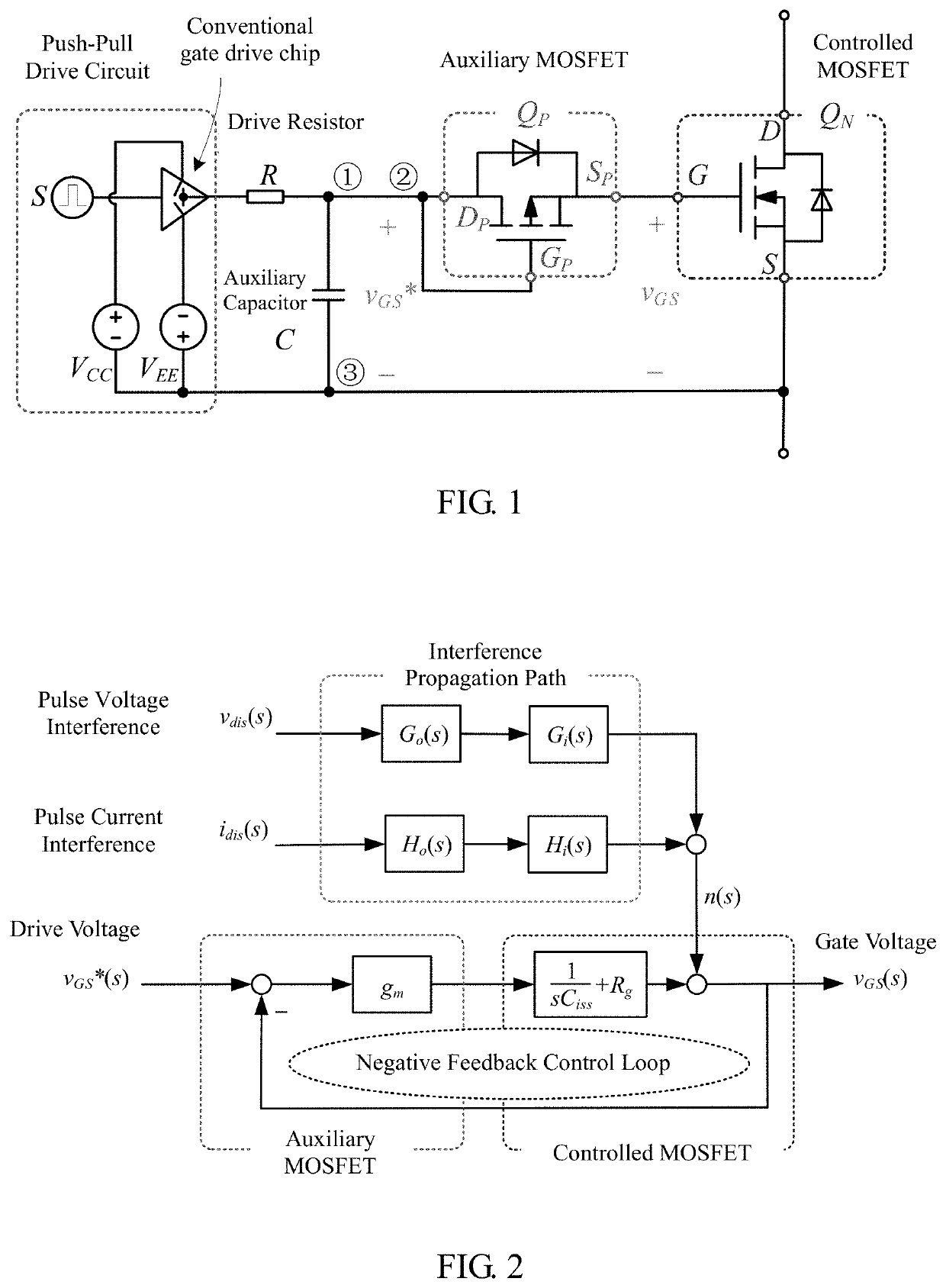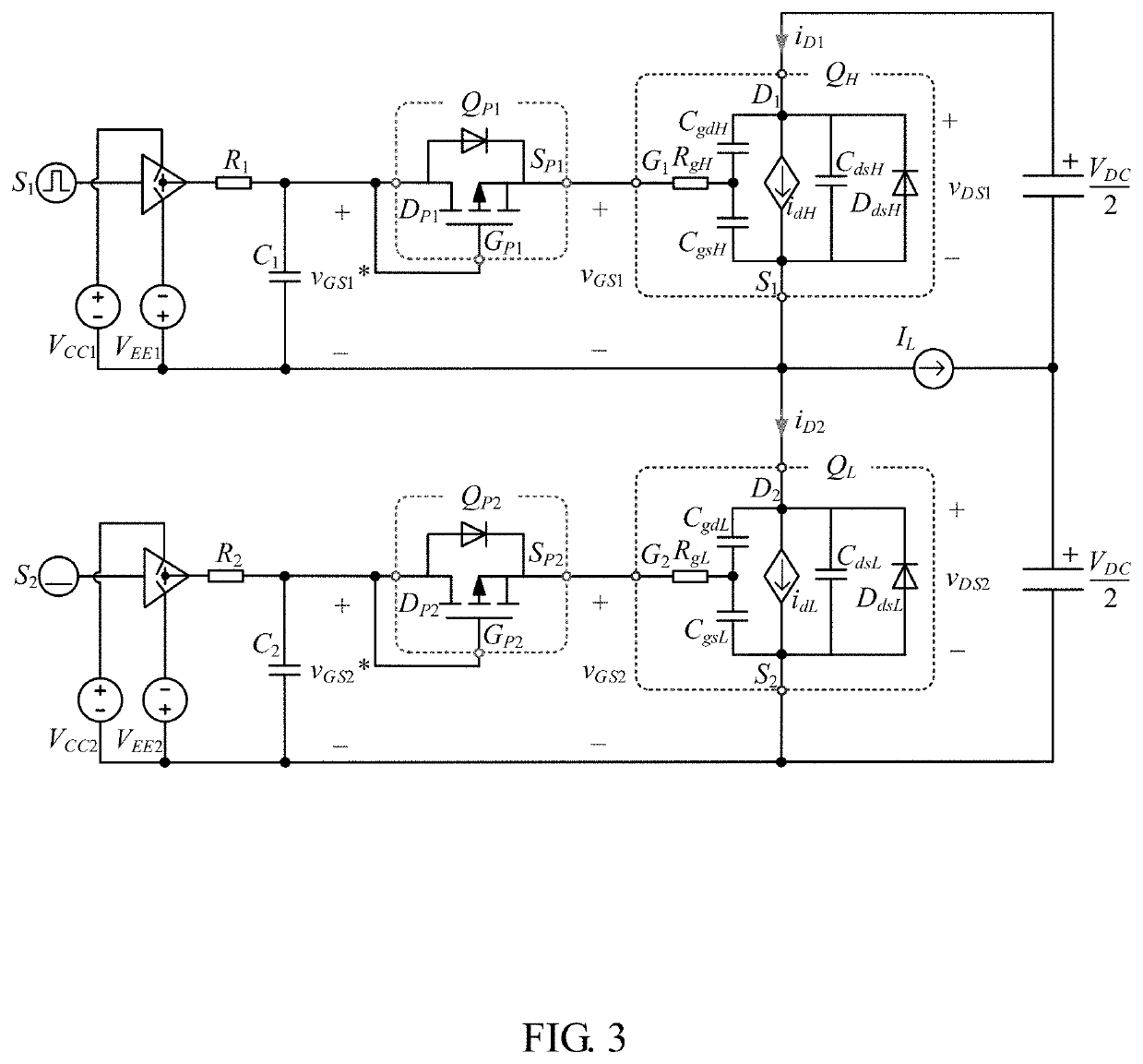Power MOSFET active gate drive based on negative feedback mechanism
a technology of negative feedback and active gate drive, which is applied in the direction of pulse generator, pulse manipulation, pulse technique, etc., can solve the problems of false trigger, additional switching loss, additional complexity, and reliability concerns due to extra components
- Summary
- Abstract
- Description
- Claims
- Application Information
AI Technical Summary
Benefits of technology
Problems solved by technology
Method used
Image
Examples
Embodiment Construction
[0074]One mode for implementing the present invention is now described.
[0075]As shown in FIG. 1, a negative feedback active gate drive (NFAGD) is used to drive a MOSFET QN. The output of a conventional gate MOSFET drive is connected to a network, constituted by the drive resistor R and the auxiliary capacitor C. The output of the RC network is also regarded as the drive reference vGS*. It then goes to the gate and source of controlled MOSFET through the auxiliary MOSFET. For building the negative feedback, the controlled MOSFET and auxiliary MOSFET should have a complementary channel characteristic. Usually, the controlled MOSFET is N-channel. Hence the auxiliary MOSFET is P-channel. Hereafter, this invention denotes the controlled MOSFET and the auxiliary MOSFET as QN and QP. The RC network is responsible for tuning the speed of switching. The gate voltage vGS would follow the drive reference vGS*, owing to the negative feedback control. Hence the speed of gate voltage vGS is simil...
PUM
| Property | Measurement | Unit |
|---|---|---|
| internal gate resistance | aaaaa | aaaaa |
| drain current | aaaaa | aaaaa |
| drain-source voltage | aaaaa | aaaaa |
Abstract
Description
Claims
Application Information
 Login to View More
Login to View More - R&D
- Intellectual Property
- Life Sciences
- Materials
- Tech Scout
- Unparalleled Data Quality
- Higher Quality Content
- 60% Fewer Hallucinations
Browse by: Latest US Patents, China's latest patents, Technical Efficacy Thesaurus, Application Domain, Technology Topic, Popular Technical Reports.
© 2025 PatSnap. All rights reserved.Legal|Privacy policy|Modern Slavery Act Transparency Statement|Sitemap|About US| Contact US: help@patsnap.com



